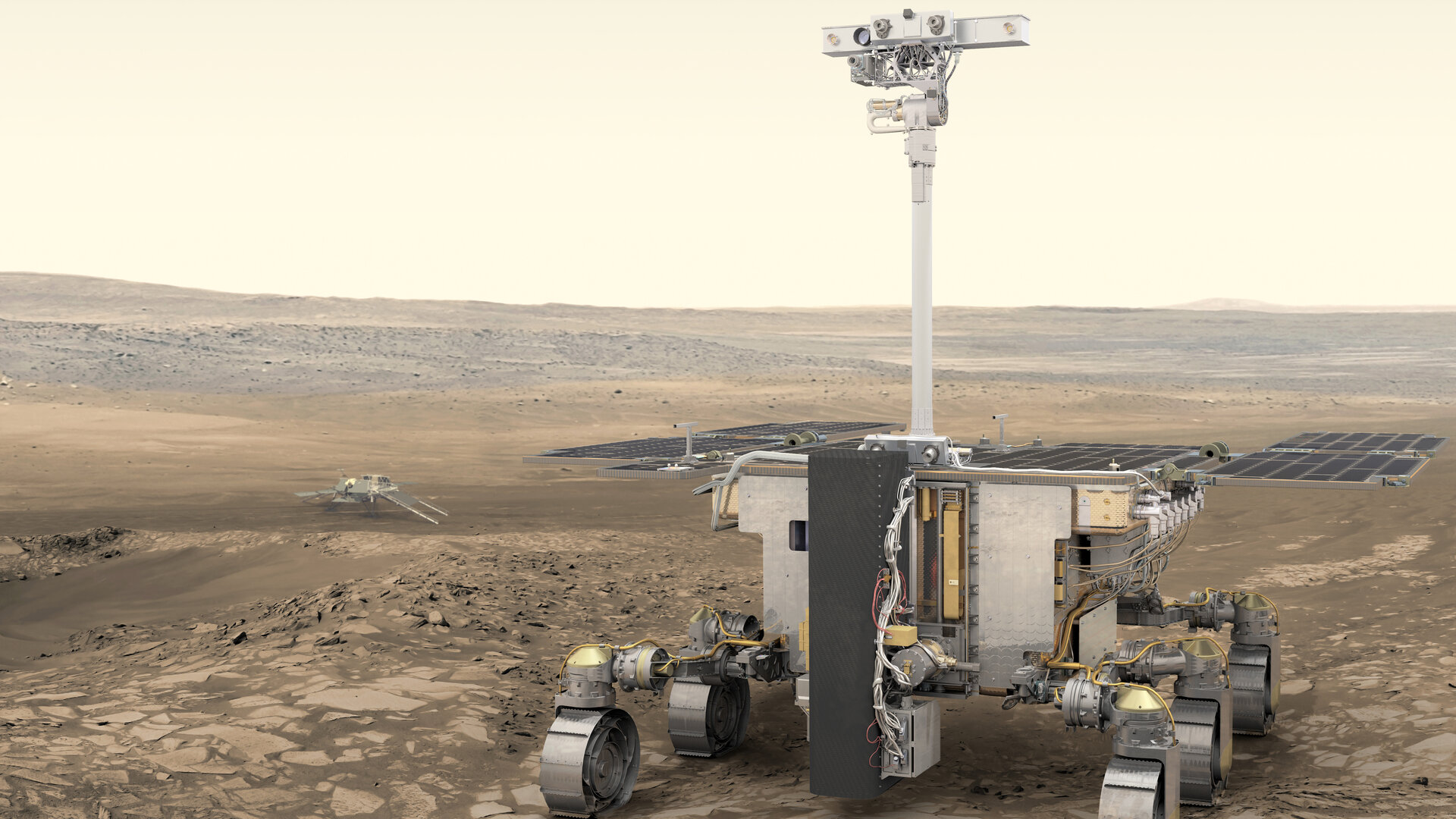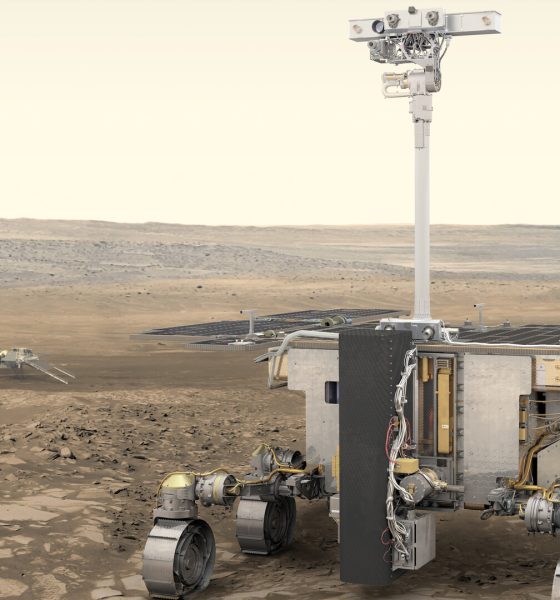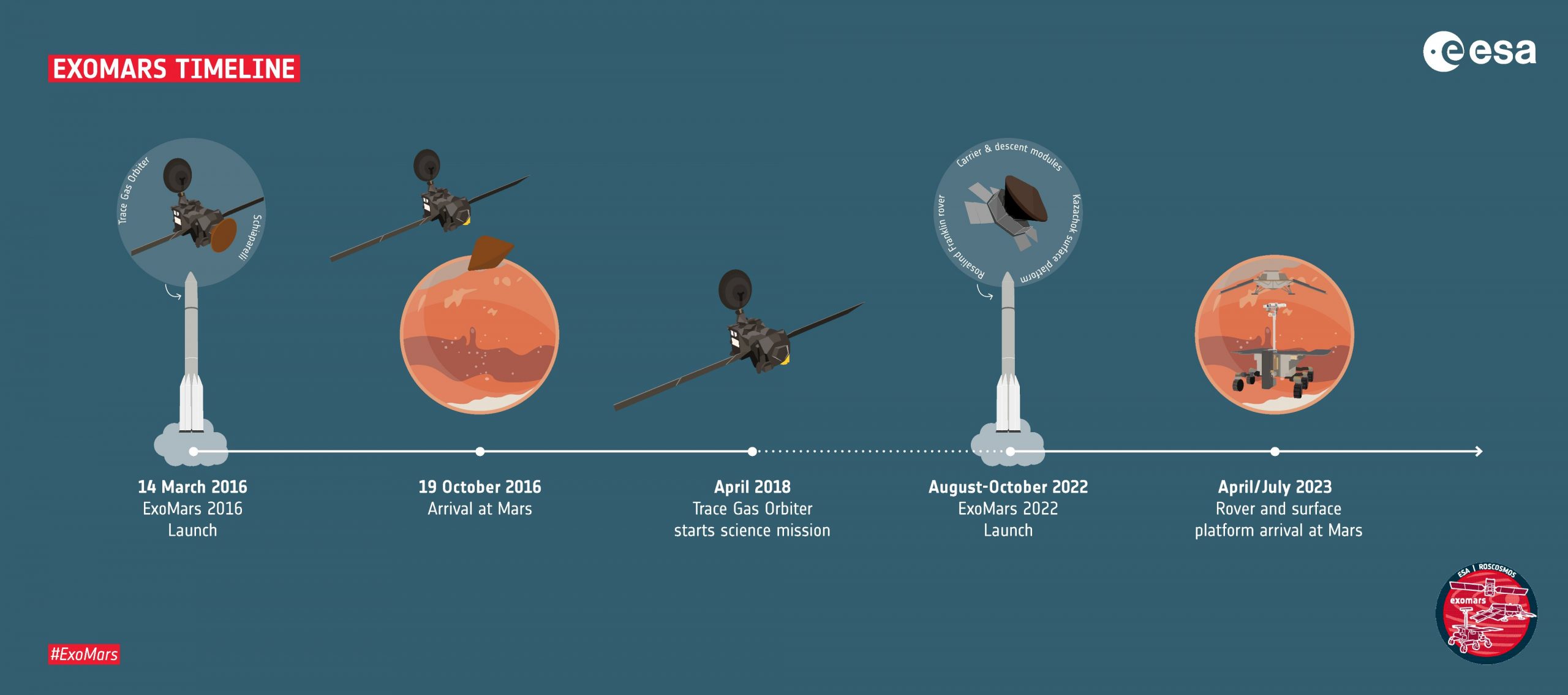

Space
Europe postpones Mars mission over ExoMars rover issue and Coronavirus
The European Space Agency (ESA) announced that its ExoMars rover would not fly this year. The mission, a collaboration with the Russian Space Agency (Roscosmos), was set to launch this summer. However, the launch has been postponed to 2022 due to technical issues and the logistical impact due to the global Conoavirus outbreak.
“This is a very tough decision, but it’s, I’m sure, the right one,” ESA Director General Jan Wörner said during a news conference at ESA’s headquarters in Paris after consulting with the head of Roscosmos, Dmitry Rogozin. “The parties had to recognise that the final phase of ExoMars activities are compromised by the general aggravation of the epidemiological situation in European countries.”
“We agreed together it’s better to go for success than just to go for launch at this time,” Wörner said. “Although we are close to launch readiness, we cannot cut corners. Launching this year would mean sacrificing remaining essential tests.”
The ExoMars rover is Europe’s first Mars rover. Named after Rosalind Franklin, a British pioneer of DNA science, the robotic explorer will search for signs of life on the red planet’s surface. Wörner said the agency needs more time to troubleshoot issues with the spacecraft’s parachute system as well as precise electronics, so the delay is necessary.
Also, the recent coronavirus outbreak that’s spreading around the globe isn’t helping. So instead of rushing, the team is taking the next two years to conduct extensive testing and make sure they get it right.

“We have made a difficult but well-weighed decision to postpone the launch to 2022,” Rogozin said in a statement. “I am confident that the steps that we and our European colleagues are taking to ensure mission success will be justified and will unquestionably bring solely positive results for the mission implementation.”
The ExoMars rover is a follow-on to ESA’s ExoMars Orbiter mission, which reached the red planet in 2016. That mission consisted of two parts: the Trace Gas Orbiter (TGO) and the Schiaparelli lander, a technology demonstrator. Unfortunately, the Schiaparelli crash-landed during its descent to the Martian surface.
Landing a spacecraft on Mars is hard. The planet’s atmosphere is thinner than what we see on Earth, and as such its takes a combination of sophisticated tools, including heat shields, retrorockets, and even giant, inflatable airbags, to safely touch down on the surface.
If anyone of those techniques fails, the spacecraft will crash, which is what happened with Schiaparelli.
Despite being around for decades, parachutes are still pretty tricky, especially using them on another planet. ESA engineers have made many adjustments to the parachute system, but keep seeing the same result: they rip as soon as they deploy. Test, after test, the chutes failed. Engineers have tried reinforcing them with Teflon to make them slide out of their bags easier, but no luck.
ESA even tried to seek advice from NASA’s Jet Propulsion Laboratory, which has built every single rover on Mars and, unfortunately needs more time to collaborate on parachute design. Because there’s only a limited window of launch opportunity, ESA officials decided to make the tough call to postpone until the next Mars window opens in 2022.
Appreciate @esa and @roscosmos for making the tough decision to postpone @ESA_ExoMars to 2022. Launching & safely landing a spacecraft on Mars are extremely demanding and require many technologies & systems to function perfectly. Your work is inspiring everyone to do hard things. https://t.co/ttPzDyQJWa
— Thomas Zurbuchen (@Dr_ThomasZ) March 12, 2020
The rover and its launcher, a Russian Proton rocket, are ready to go. The agency has more parachute tests in the works, including high-altitude drops.
Additionally, Wörner said the team discovered issues with the descent module’s electronic equipment, which are essential to the mission’s success. This piece of equipment controls functions like spacecraft power, propulsion, and even parachute control. It will take some time for the bugs to be fixed.
“Due to the troubleshooting of these anomalies at system level, the final version of the flight software has been delayed, and there is not enough time to fully test it before a 2020 launch and gain the confidence we need,” Wörner said.
You can technically launch to Mars anytime, but space agencies around the world choose specific windows that open every two years. During this time, Mars and Earth are in line, so that it takes less time and uses less fuel. In 2022, that window is open from August to October.
Once it reaches the Martian surface, the rover will study an ancient lake bed. It will scour the red planet’s surface in search of biosignatures, or signs of life.

News
SpaceX shades airline for seeking contract with Amazon’s Starlink rival

SpaceX employees, including its CEO Elon Musk, shaded American Airlines on social media this past weekend due to the company’s reported talks with Amazon’s Starlink rival, Leo.
Starlink has been adopted by several airlines, including United Airlines, Qatar Airways, Hawaiian Airlines, WestJet, Air France, airBaltic, and others. It has gained notoriety as an extremely solid, dependable, and reliable option for airline travel, as traditional options frequently cause users to lose connection to the internet.
Many airlines have made the switch, while others continue to mull the options available to them. American Airlines is one of them.
A report from Bloomberg indicates the airline is thinking of going with a Starlink rival owned by Amazon, called Leo. It was previously referred to as Project Kuiper.
American CEO Robert Isom said (via Bloomberg):
“While there’s Starlink, there are other low-Earth-orbit satellite opportunities that we can look at. We’re making sure that American is going to have what our customers need.”
Isom also said American has been in touch with Amazon about installing Leo on its aircraft, but he would not reveal the status of any discussions with the company.
The report caught the attention of Michael Nicolls, the Vice President of Starlink Engineering at SpaceX, who said:
“Only fly on airlines with good connectivity… and only one source of good connectivity at the moment…”
CEO Elon Musk replied to Nicolls by stating that American Airlines risks losing “a lot of customers if their connectivity solution fails.”
American Airlines will lose a lot of customers if their connectivity solution fails
— Elon Musk (@elonmusk) December 14, 2025
There are over 8,000 Starlink satellites in orbit currently, offering internet coverage in over 150 countries and territories globally. SpaceX expands its array of satellites nearly every week with launches from California and Florida, aiming to offer internet access to everyone across the globe.
Currently, the company is focusing on expanding into new markets, such as Africa and Asia.
News
Tesla hints at Starlink integration with recent patent
“By employing polymer blends, some examples enable RF transmission from all the modules to satellites and other communication devices both inside and outside the vehicle.”

Tesla hinted at a potential Starlink internet terminal integration within its vehicles in a recent patent, which describes a vehicle roof assembly with integrated radio frequency (RF) transparency.
The patent, which is Pub. No U.S. 2025/0368267 describes a new vehicle roof that is made of RF-transparent polymer materials, allowing and “facilitating clear communication with external devices and satellites.”
Tesla believes that a new vehicle roof design, comprised of different materials than the standard metallic or glass elements used in cars today, would allow the company to integrate modern vehicular technologies, “particularly those requiring radio frequency transmission and reception.
Tesla has recently filed a US patent application on integrating RF transparent materials into the roof structure.
“facilitating clear communication with external devices and satellites”
Tesla fleet is getting @Starlink connectivity integration soon. LFG @Tesla @elonmusk… pic.twitter.com/bLa8YtPLd1
— Chansoo Byeon (@Chansoo) December 9, 2025
Instead of glass or metallic materials, Tesla says vehicles may benefit from high-strength polymer blends, such as Polycarbonate, Acrylonitrile Butadiene Styrene, or Acrylonitrile Styrene Acrylate.
These materials still provide ideal strength metrics for crashworthiness, stiffness for noise, vibration, and harshness control, and are compliant with head impact regulations.
They would also enable better performance with modern technologies, like internet terminals, which need an uninterrupted signal to satellites for maximum reception. Tesla writes in the patent:
“By employing polymer blends, some examples enable RF transmission from all the modules to satellites and other communication devices both inside and outside the vehicle.”

One of the challenges Tesla seems to be aware of with this type of roof design is the fact that it will still have to enable safety and keep that at the forefront of the design. As you can see in the illustration above, Tesla plans to use four layers to increase safety and rigidity, while also combating noise and vibration.
It notes in the patent that disclosed examples still meet the safety requirements outlined in the Federal Motor Vehicle Safety Standards (FMVSS).
Starlink integrated directly into Tesla vehicles would be a considerable advantage for owners. It would come with a handful of distinct advantages.
Initially, the inclusion of Starlink would completely eliminate cellular dead zones, something that is an issue, especially in rural areas. Starlink would provide connectivity in these remote regions and would ensure uninterrupted service during road trips and off-grid adventures.
It could also be a critical addition for Robotaxi, as it is crucial to have solid and reliable connectivity for remote monitoring and fleet management.
Starlink’s growing constellation, thanks to SpaceX’s routine and frequent launch schedule, will provide secure, stable, and reliable internet connectivity for Tesla vehicles.
Although many owners have already mounted Starlink Mini dishes under their glass roofs for a similar experience, it may be integrated directly into Teslas in the coming years, either as an upgrade or a standard feature.
Investor's Corner
SpaceX IPO is coming, CEO Elon Musk confirms
However, it appears Musk is ready for SpaceX to go public, as Ars Technica Senior Space Editor Eric Berger wrote an op-ed that indicated he thought SpaceX would go public soon. Musk replied, basically confirming it.

Elon Musk confirmed through a post on X that a SpaceX initial public offering (IPO) is on the way after hinting at it several times earlier this year.
It also comes one day after Bloomberg reported that SpaceX was aiming for a valuation of $1.5 trillion, adding that it wanted to raise $30 billion.
Musk has been transparent for most of the year that he wanted to try to figure out a way to get Tesla shareholders to invest in SpaceX, giving them access to the stock.
He has also recognized the issues of having a public stock, like litigation exposure, quarterly reporting pressures, and other inconveniences.
However, it appears Musk is ready for SpaceX to go public, as Ars Technica Senior Space Editor Eric Berger wrote an op-ed that indicated he thought SpaceX would go public soon.
Musk replied, basically confirming it:
As usual, Eric is accurate
— Elon Musk (@elonmusk) December 10, 2025
Berger believes the IPO would help support the need for $30 billion or more in capital needed to fund AI integration projects, such as space-based data centers and lunar satellite factories. Musk confirmed recently that SpaceX “will be doing” data centers in orbit.
AI appears to be a “key part” of SpaceX getting to Musk, Berger also wrote. When writing about whether or not Optimus is a viable project and product for the company, he says that none of that matters. Musk thinks it is, and that’s all that matters.
It seems like Musk has certainly mulled something this big for a very long time, and the idea of taking SpaceX public is not just likely; it is necessary for the company to get to Mars.
The details of when SpaceX will finally hit that public status are not known. Many of the reports that came out over the past few days indicate it would happen in 2026, so sooner rather than later.
But there are a lot of things on Musk’s plate early next year, especially with Cybercab production, the potential launch of Unsupervised Full Self-Driving, and the Roadster unveiling, all planned for Q1.








